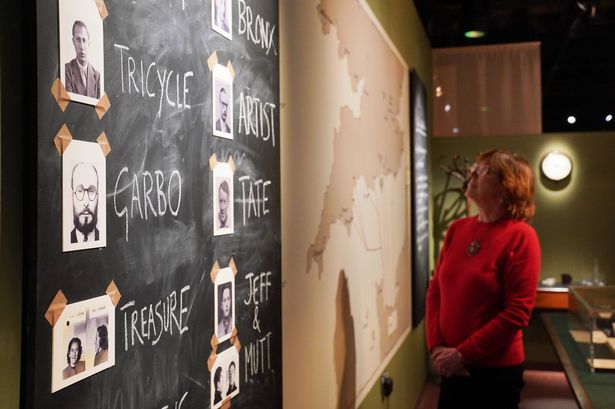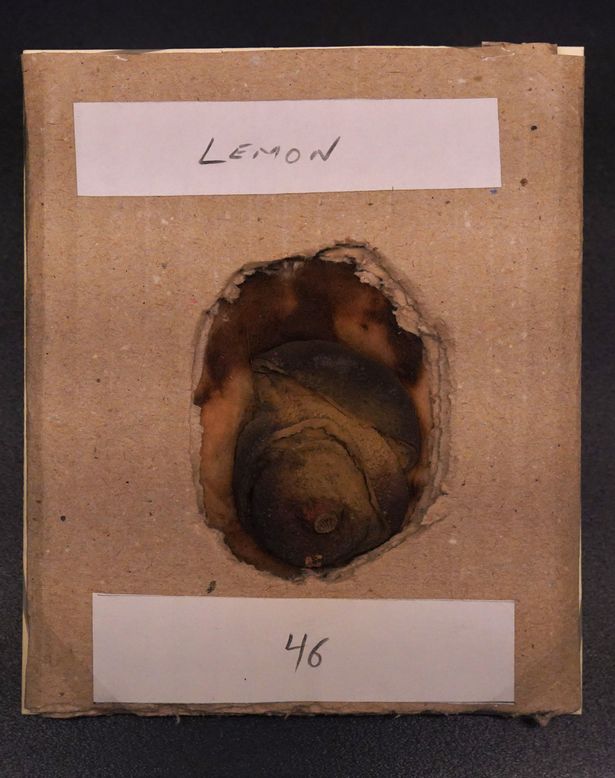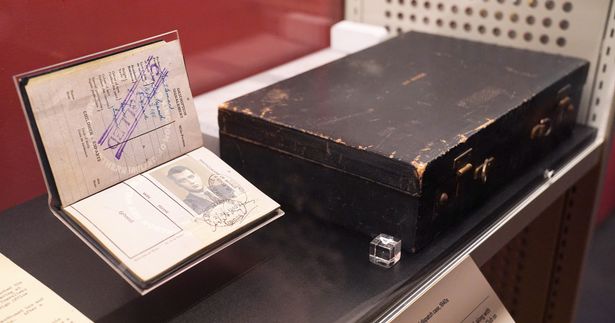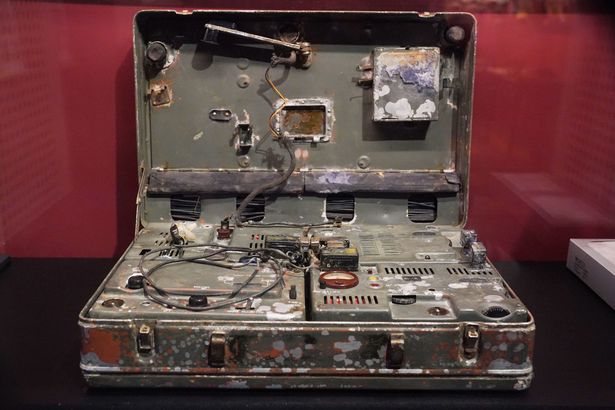A collection of never-before-seen files, photographs and items from MI5’s own archives are going on display for the first time, lifting the lid on how spies operate
From Smiley’s People and The Avengers to Spooks, spy stories have long been a TV staple.
Now the groundbreaking Apple TV series Slow Horses has bagged six nominations at the upcoming TV BAFTA Awards in May – putting the goings-on at MI5 firmly on the public radar.
Based on the books by Mick Herron and starring Gary Oldman as Jackson Lamb, Slow Horses follows the adventures of a group of MI5 service rejects who have been condemned to live out their dead-end careers at Slough House under the flatulent and totally repulsive Lamb’s watchful eye.
Filming for season 5, based on the book London Rules, has already wrapped and is expected to drop on the streaming platform in September.
And. as streaming fans chatter about espionage and whether real spies are more James Bond or Jackson Lamb, the first ever exhibition MI5 has put its name to opens on Saturday (April 5) at the National Archives in Kew, south-west London.
It’s the first time in the secret intelligence agency’s 115-year history that it has opened up its own archives, allowing the public in to view original case files, never-before-seen photographs and papers and even to marvel at some of the authentic espionage equipment used by spies – from MI5’s private collection.
The MI5: Official Secrets show delves into the agency’s past, from its formation shortly before WWI all the way through fighting fascism, the Nazi threat and the Cold War to present-day counter-terrorism measures.
Current Director-General of MI5, Sir Ken McCallum, said the highly secretive intelligence agency started releasing files about its work in 1997, and has so far made public more than 6,000 paper records from its own catalogues in Thames House, central London.
“From MI5’s origins as a team of two officers to the present day, we’ve been protecting the UK from the most serious threats to our national security for 115 years,” he said ahead of the exhibition’s opening.
“That headline mission, and the values that underpin it, haven’t changed much. But how we keep the country safe is always evolving, always dynamic, always fascinating.”
Sir Ken went on: “Having worked for MI5 for nearly 30 years, I can tell you that the reality of our work is often different from fiction – whether that fiction is George Smiley or Jackson Lamb.
“MI5 life is about ordinary human beings together doing extraordinary things to keep our country safe… While much of our work must remain secret, what you’ll see reflects our ongoing commitment to being open wherever we can.”
Among the items on display is a lemon found in the dressing table drawer of Karl Muller, a German spy masquerading as Belgian refugee living in London shortly before the First World War.
After growing suspicious, MI5 agents intercepted his mail and found he had been passing on British military intelligence to his handlers in Germany, written in lemon juice in between the lines of his seemingly innocuous business letters.
When caught, agents questioned why he had a lemon in his possession. Muller tried to claim it was to clean his teeth, but analysis revealed the lemon had been used to provide juice to write with – the invisible ink only showed up when it was exposed to heat, which agents did by running an iron over the letter.
Muller was secretly tried, convicted of espionage and sentenced to death by firing squad at the Tower of London in 1915.
MI5 continued to correspond with Muller’s German paymasters, pretending to be him while requesting more funds from Berlin. Money was duly sent – and used by MI5 to buy an office car, which they dubbed the Muller Mobile.
Also on display for the first time is the dark brown leather briefcase belonging to ‘Cambridge Five’ spy Guy Burgess, who had been recruited by the Soviet Union to pass British intelligence on to Moscow.
Burgess, who was first hired as a secret agent while studying at Cambridge University, left behind two cases at the Reform Club in London when he defected to the Soviets in 1951, along with Donald Maclean.
His fellow Cambridge spy Anthony Blunt retrieved one of the cases and took out incriminating documents before passing it on to MI5. He was later unmasked as a spy but kept hold of his job as Surveyor of the Queen’s Pictures, responsible for the Royal Collection of Pictures, after confessing to espionage.
“It’s reported that when the Queen was told about the Blunt case, she reacted calmly and without surprise,” said Mark Dunton, historian and curator of the exhibition. “She remembered he had been under suspicion way back in the aftermath of the Burgess and Maclean case.”
Visitors will also get to see the actual transmitter used by Soviet spies Helen and Peter Kroger which they used to send flash transmissions to Moscow. The American Communists formed part of the Portland Spy Ring between 1953 and 1961, which smuggled naval secrets about Britain’s early submarine programme out to the Soviet Union.
British-born Harry Houghton and Ethel Gee worked for the Admiralty Underwater Weapons Establishment on the Island of Portland in Dorset, and had access to classified info. The pair would smuggle out top-secret documents to their handler, Gordon Lonsdale – who was actually KGB agent Konan Molody.
He would then get the information in microdot form to the Krogers, who used their transmitter – buried in the garden of their unassuming Ruislip bungalow – to send the military plans to Moscow.
The show also shines light on the vital work done by women in spycraft, from the Girl Guides who were recruited during WWII to run messages, sort cards and fill ink wells – because they were regarded as more reliable than Boy Scouts – to the Registry, a vast collection of index cards built up by female agents over the years to keep tabs on hundreds of thousands of people who posed a potential threat to national security.
Spymaster Maxwell Knight – the inspiration for ‘M’ in James Bond – championed the use of women in espionage. “He felt that women had an advantage over men because of their qualities such as intuition and guile,” says Mark.
One of his agents was Olga Grey, codenamed ‘Miss X’, who infiltrated British communist groups and helped to foil the Woolwich Arsenal spy ring in 1938. “It was largely down to her good work, although it took a personal toll on her,” adds Mark.
Olga later left the service for a new life in Canada, with a £500 severance package and died in 1990 at the age of 83.
*MI5: Official Secrets runs from April 5 to September 28 at the National Archives in Kew. Entry is free.





